Related Links
Articles
> Week in review
> Capt. Fear plays Cupid
> NFC South links
> Valentine's Day cards
> Life After Football: Diaz
> [Getting to know Shepard
](http://www.buccaneers.com/news/article-1/Getting-to-Know-Russell-Shepard/9eb3085f-062f-4502-bd47-78e5f457cb6e)
Photos
Videos
The 2015 NFL Scouting Combine begins this week in Indianapolis, which means more than 300 draft hopefuls will be flooding Lucas Oil Stadium and the surrounding environs in the hopes of improving their respective draft "stock." If you want to know who those 300+ young men are, NFL.com helpfully has them compiled and sortable by name, position and school.
That's a lot of names, and only the most die-hard college football fans will recognize all of them. A week from now, however, even casual NFL fans will know some of those players a lot better because ever-increasing coverage of the event makes it clear who the "winners" and "losers" were. Twenty years after Mike Mamula made "workout warrior" a pejorative term (and really, his only sin as an NFL player was not being as good as Warren Sapp), we're still finding plenty of reasons to adjust our mock drafts after every Combine.
The truth is, players can help themselves in Indianapolis, even if the impact of a great 40-yard dash is sometimes overstated. Neither the Buccaneers nor any of their fellow NFL teams are going to publicly acknowledge how their draft boards are affected by the Combine, but when it comes to previous drafts, we can certainly take some well-educated guesses.
As such, here are four players who almost surely helped their chances of being drafted by Tampa Bay with their performances at the Scouting Combine. You'll notice that two of those decisions worked out very well for the Buccaneers, and two not so much.
1. WR Mike Evans, #7 overall, 2014
We might as well start with the most recent example. Look, Mike Evans was obviously a highly-regarded prospect during the entire lead-up to last year's draft, though there were apparently some questions about his speed in January. But last year's receiver class was considered particularly deep – and it would prove to be perhaps the best set of rookie wideouts in league history a few months later – which meant receiver-hungry teams had plenty of options.
That meant that Evans, who had great size, outstanding production at the college level and fantastic hands, went to Indy simply trying to patch any perceived holes in his resume. The developing outside perception of the Texas A&M wideout from January through May tells the story of how well he performed in the most important week of the offseason. In January, ESPN.com's Mel Kiper released an initial mock draft that slotted Evans at pick #13. On March 13, not long after the Combine, Kiper had Evans going #10 overall. By the time he released his final mock, just days before the real draft, Kiper had Evans going fifth overall, to the Raiders just one pick after fellow WR Sammy Watkins.
Check out all 12 of Rookie of the Year Nominee Mike Evans' touchdowns from the 2014 season.
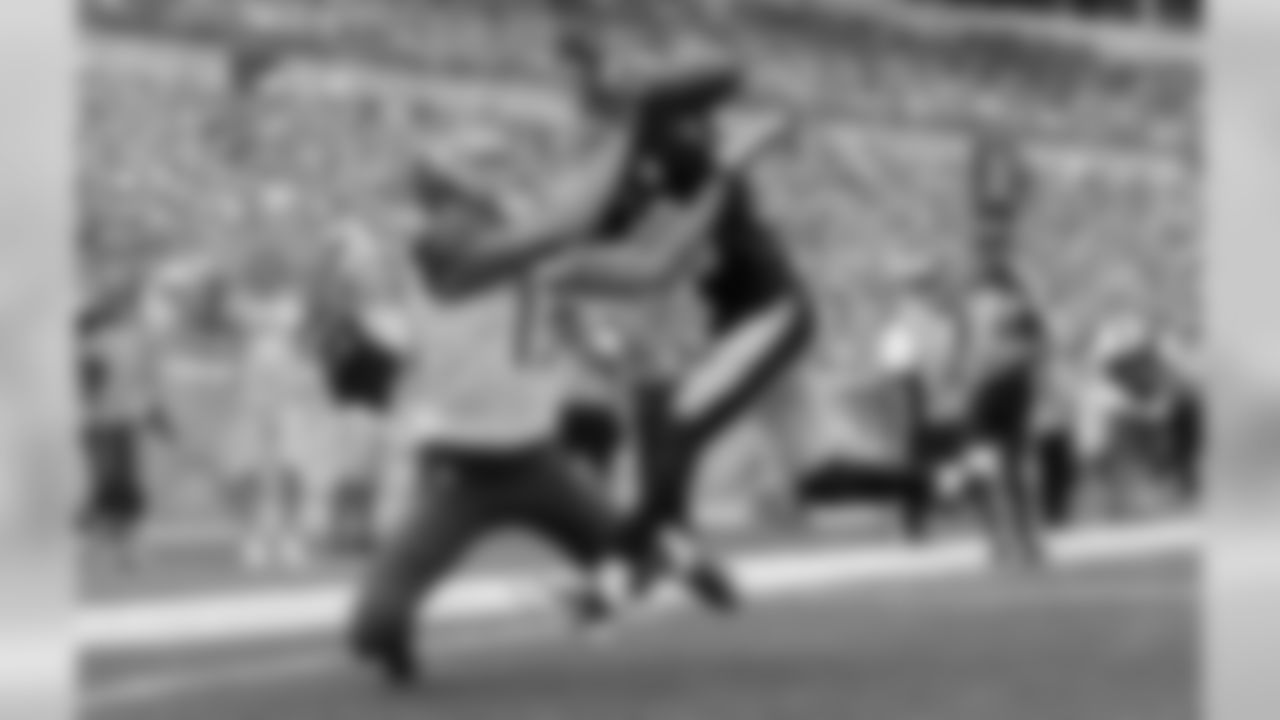

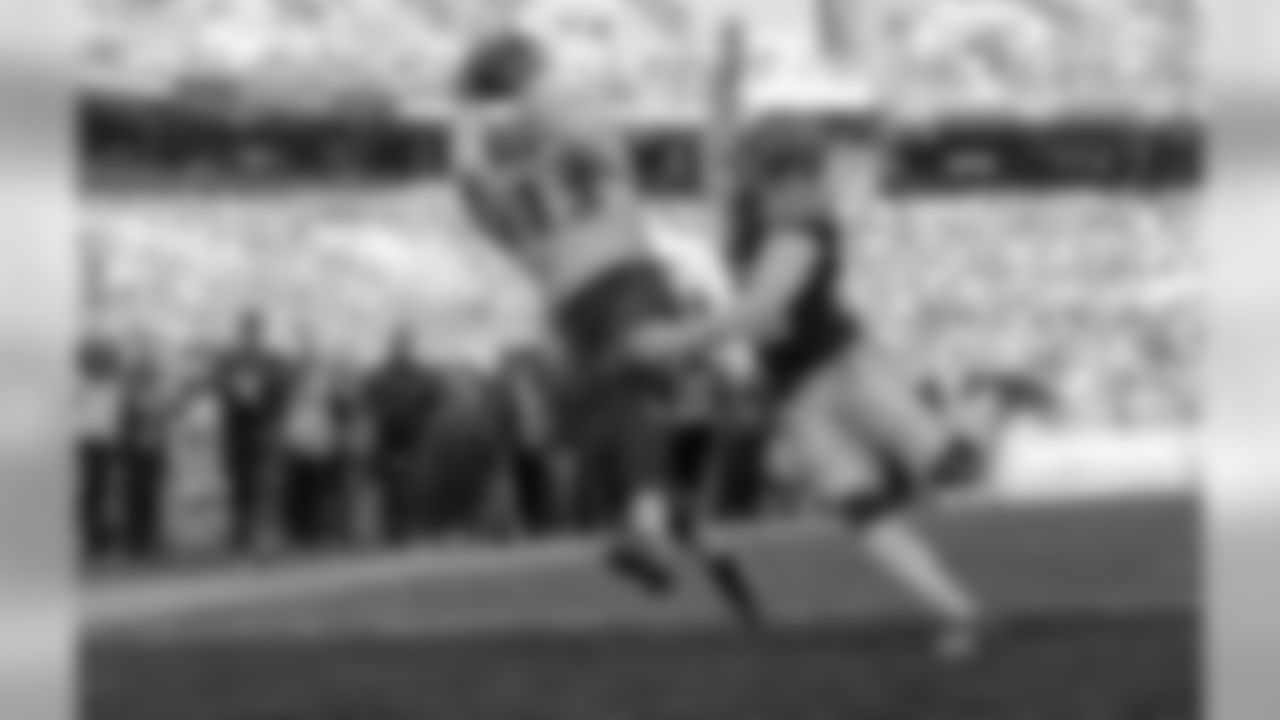
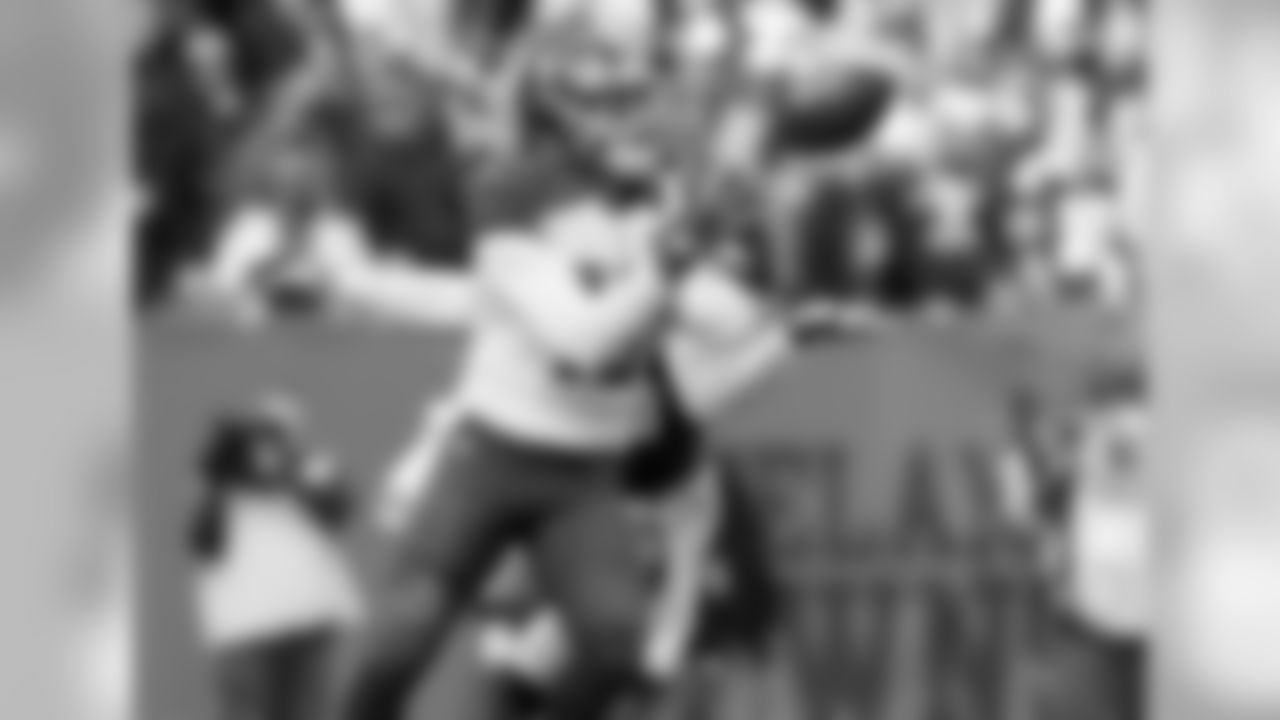

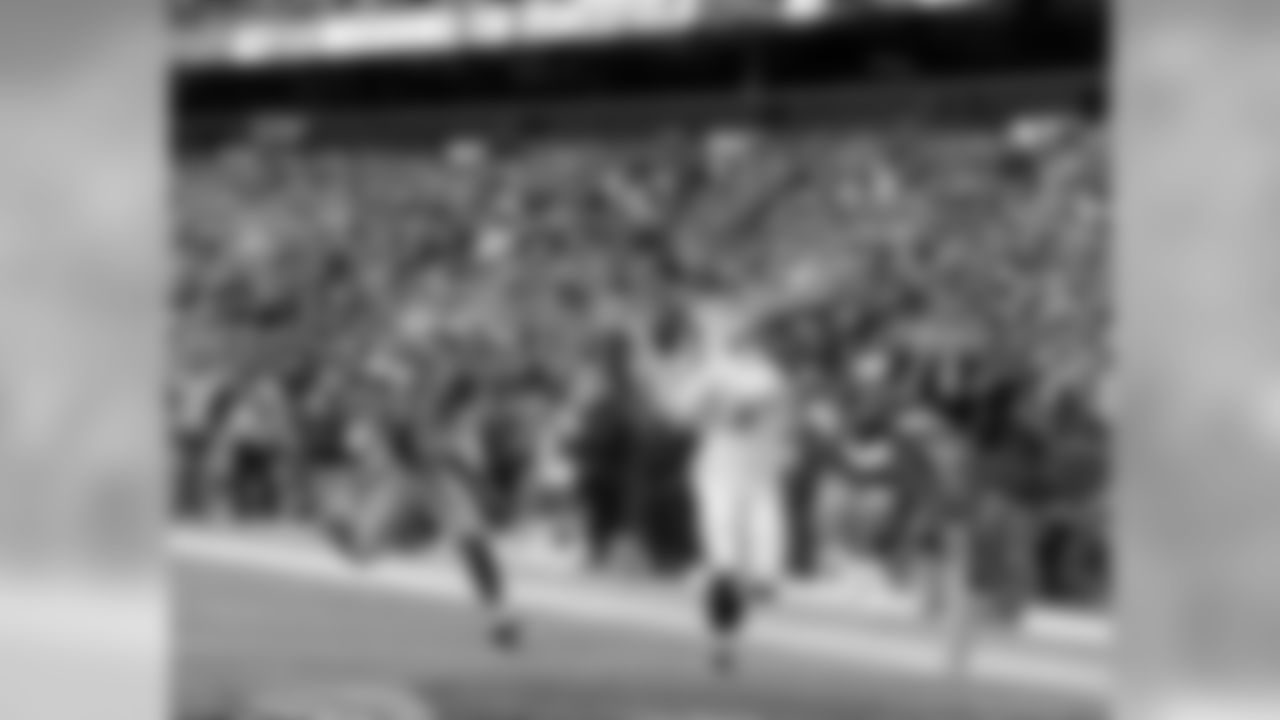
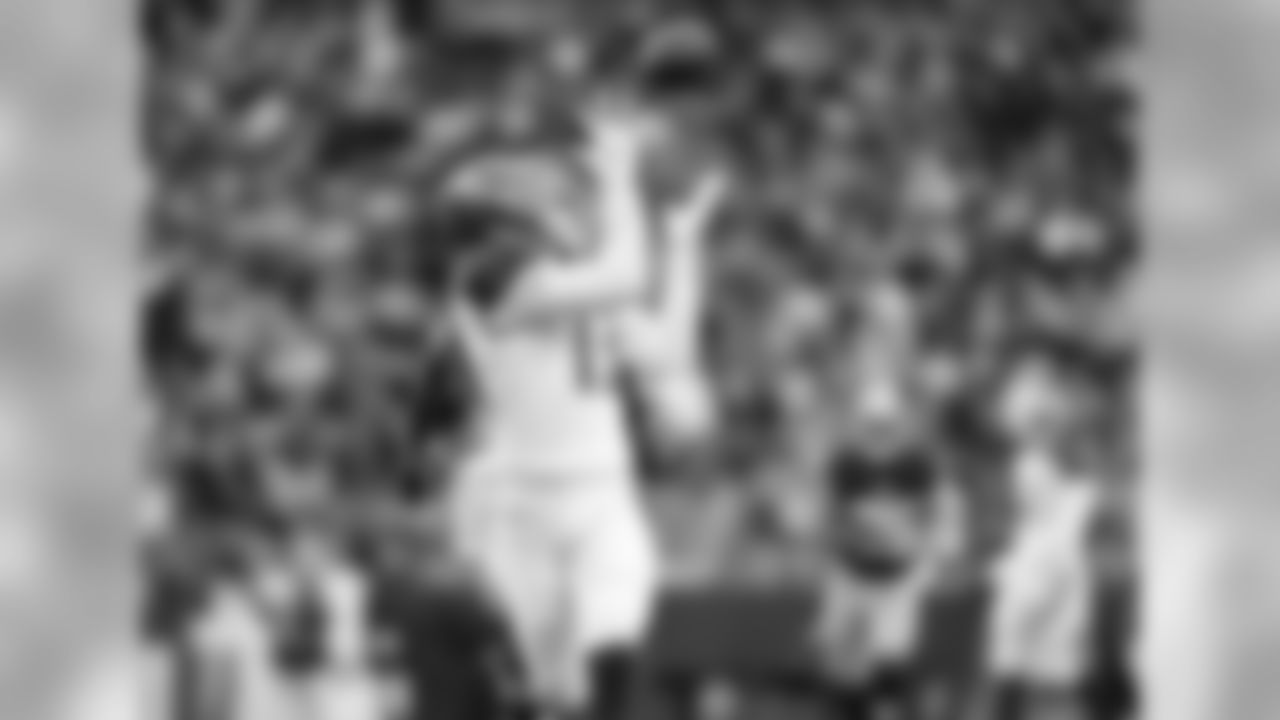
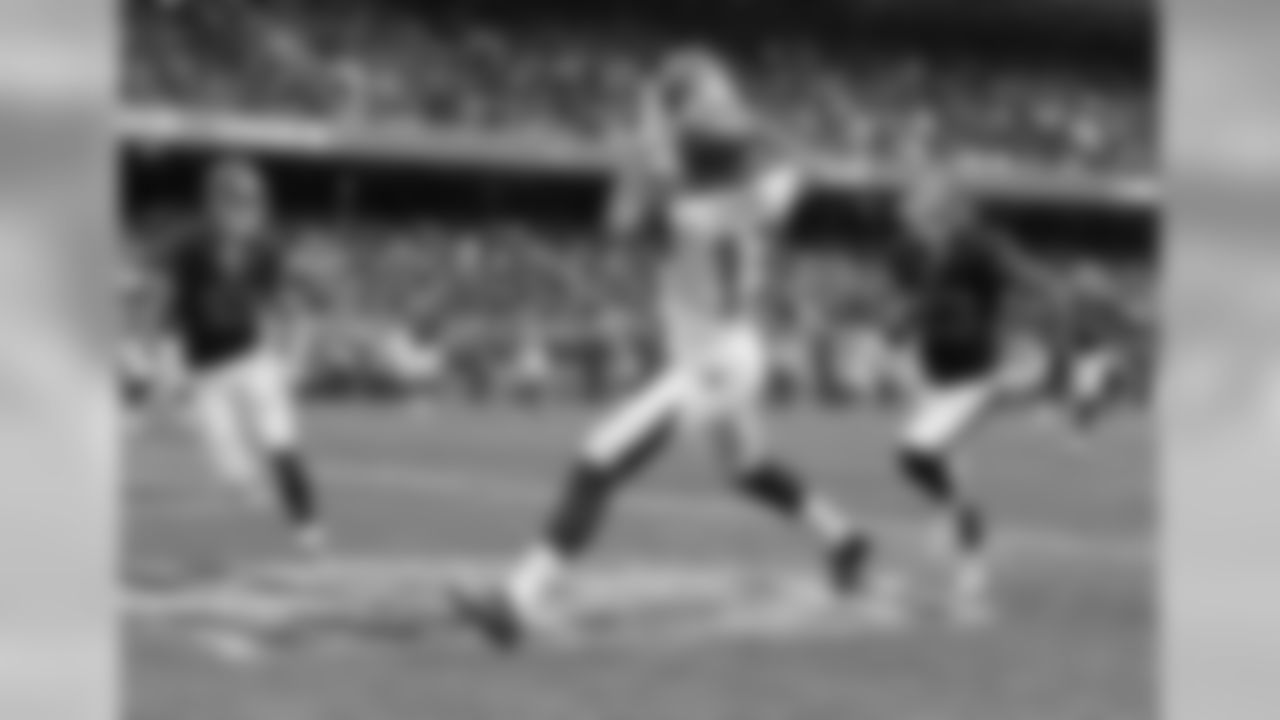
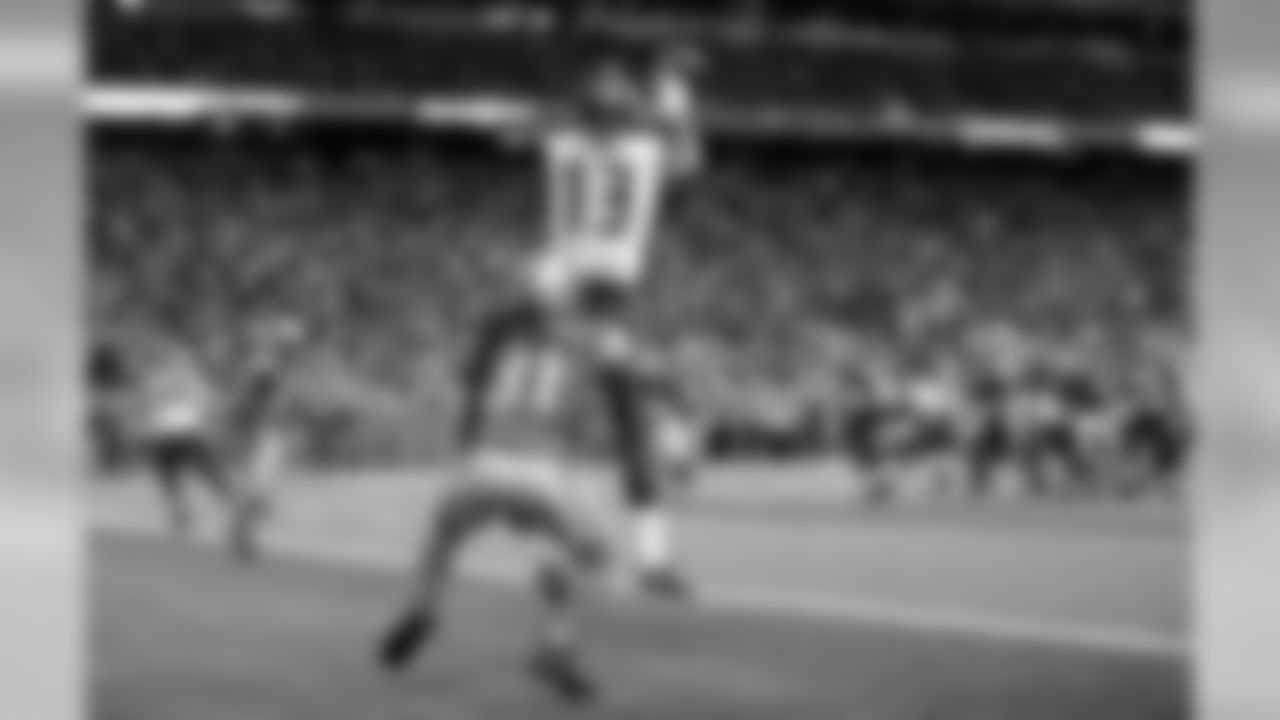
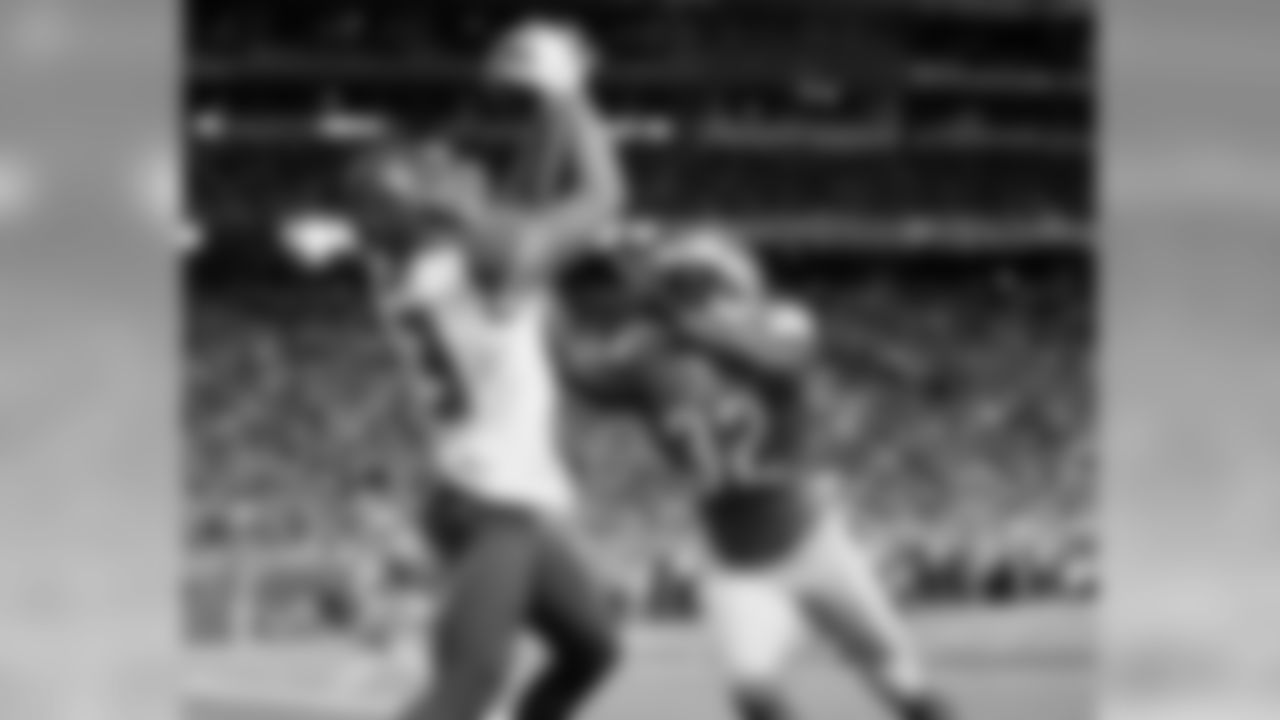
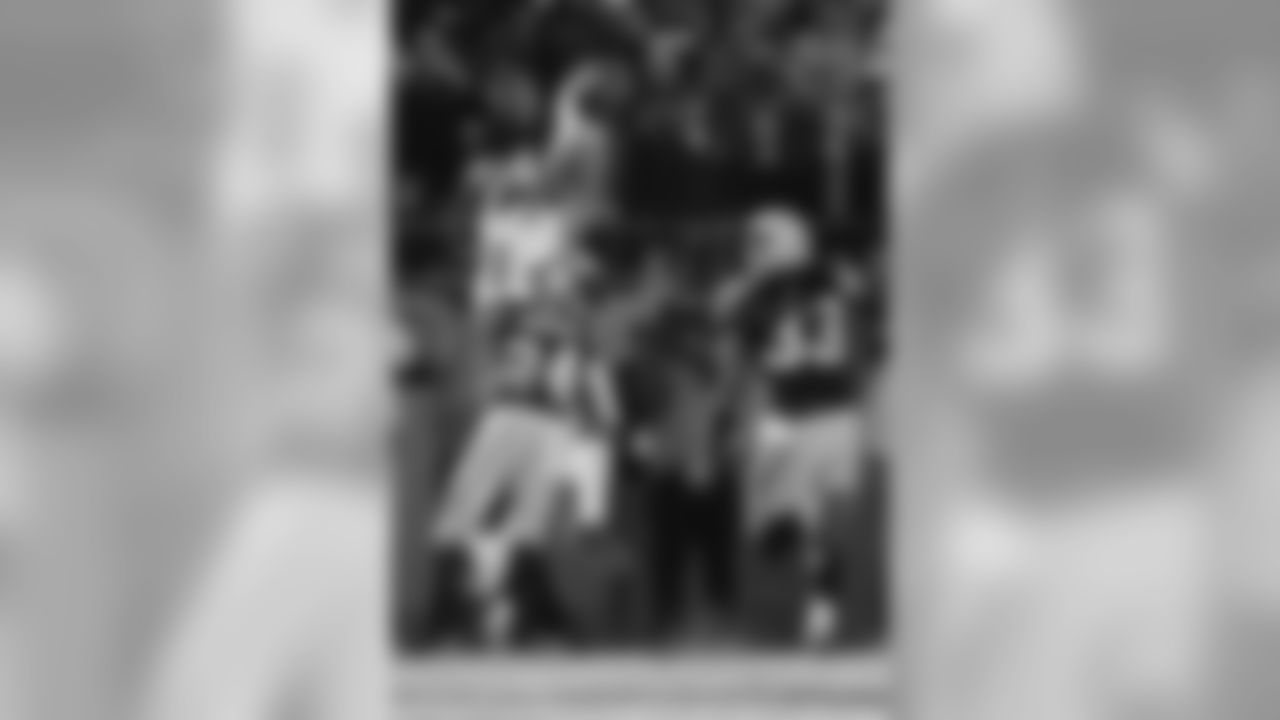
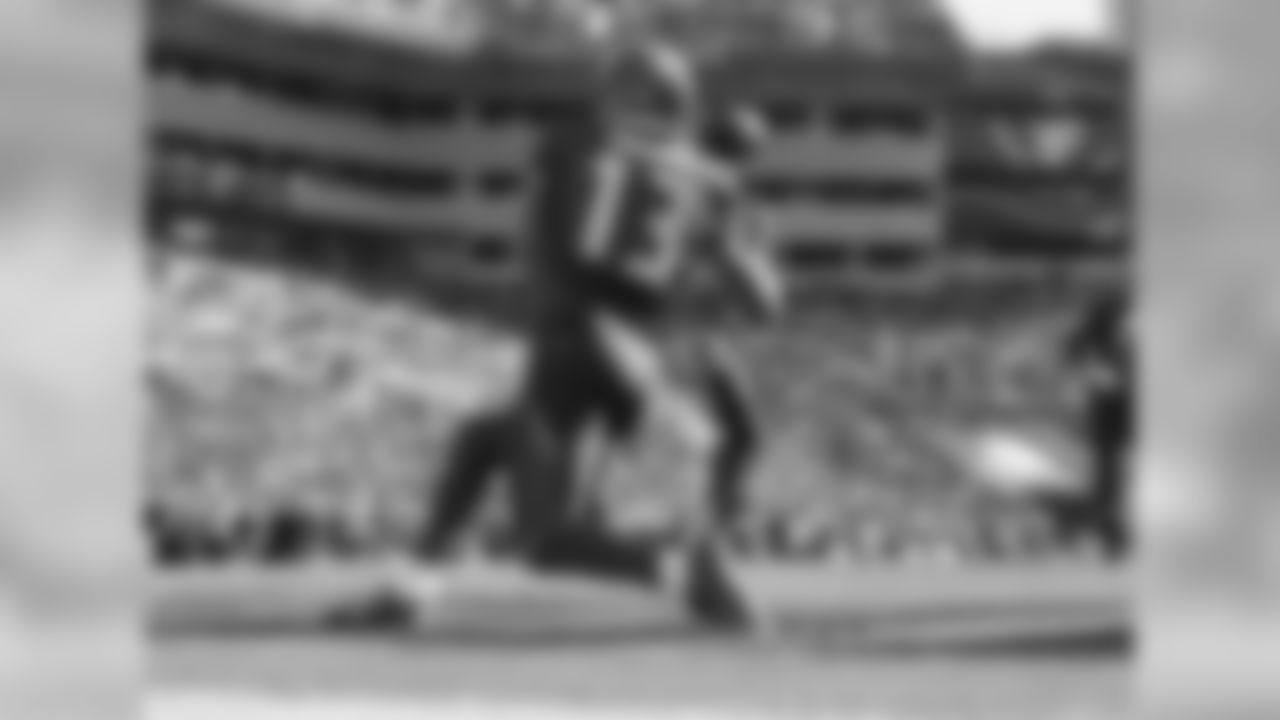
Evans didn't go fifth, fortunately for the Buccaneers. He was waiting for them at #7 and they gladly jumped at the chance to get a player they had been targeting for a long time. It's impossible to know if Evans experienced a similar upward drift on Tampa Bay's draft board from January through May, but there's no doubt he helped himself in Indianapolis.
Evans ran a series of 40-yard dashes in the 4.5-range, which was considered good enough if not overwhelming, and he would later do better at his A&M Pro Day. He also put up some influential numbers without even running a route, as his 35 and 1/8 inch arms – officially measured in Indy – described a ridiculously wide wing span and "catch radius." Evans also did an outstanding job during the position-specific drills for receivers. He ran his routes fluidly and repeatedly caught passes with his hands rather than cradling them with his body. Essentially, he looked like a polished receiver while running drills created by NFL coaches and in direct competition with the other highly-rated wideout prospects.
2. WR Dexter Jackson, #58 overall, 2008
Dexter Jackson was not part of an historically-good class of receivers. Rather, it was a difficult group to sort out, without an obvious #1 or #2 standout, and in fact that proved to be the first draft since 1990 in which no wideouts went in the first round.
A ton of receivers went in Round Two, however, 10 of them in all with another five following in the third round. As it turned out Green Bay's Jordy Nelson (#36 overall) and Philly's DeSean Jackson (#49 overall) proved to be the best of the lot, but that outcome was far from obvious at the time. One of the more interesting prospects in the group was Appalachian State's Dexter Jackson, who had gained a wider national profile with a big performance in his team's shocking upset of Michigan.
Jackson was small and he obviously didn't face the best possible competition during his college years. However, he had a very good Senior Bowl and that kept the momentum he built during the 2007 college season on the rise. He went to Indy with a chance to raise his stock by proving he had top-notch speed.
And Jackson did just though. Though his official 40-yard dash times ranged around the 4.30-4.35 range, he unofficially clocked a 4.27 that had scouts buzzing. Those who chose to accept that time as accurate saw Jackson as the fastest of the all the receivers at this year's combine. Since a good portion of his value was thought to be in his skill in the return game – that was definitely something the Buccaneers were looking for in 2008 – that 40-yard dash was even more important for him than for some of the more established receivers.
The Buccaneers didn't get a shot at DeSean Jackson, picking fairly late in the 2007 draft. In the long run, their choice of Dexter Jackson at #58 didn't cost them a star receiver who went later; Earl Bennett, Early Doucet, Harry Douglas, Mario Manningham and Andre Caldwell were the next five to go. At least those players offered some return value on their selection spots, however. Jackson, in contrast, ranks as one of the least successful draft picks in Buccaneer franchise history.
Jackson played in seven games as a rookie and was released at the end of the following preseason. It is nearly unheard-of for second-round picks to last just one year with their drafting teams. He spent some time on the practice squads for the Panthers and Jets in subsequent years, and also tried out the UFL, but he never played another regular-season NFL game.
During those seven games as a rookie, Jackson got a chance to nail down the kick return job. He appeared tentative, however, which made his speed largely irrelevant. The Bucs did end up with a Pro Bowl return man that year, but it was undrafted running back Clifton Smith, who got his chance when Jackson washed out.
3. LB Lavonte David, #58 overall, 2012
Hey, there's nothing wrong with the 58th pick. It may not have worked out in 2008, but the Buccaneers hit the jackpot at that spot four year later.
Mark Dominik was the general manager that season, and his Buccaneers moved all over the draft board in the first two rounds. First, they traded down two spots near the top of the first round to draft Alabama safety Mark Barron. Then, they traded back up into the bottom of the opening stanza to nab Boise State RB Doug Martin. That left the team without a second-round pick as the second day of the draft began, but as Nebraska LB Lavonte David began to fall in the second round, the Bucs decided it was time to pounce.
Heading into the 2012 draft weekend, David was considered a likely second or third-round pick. The Buccaneers may have thought they had lost their chance to get the Cornhusker when they moved up for Martin. Fortunately, in the long run, they still got their shot at a player they fell in love with in Indianapolis.
A photographic look at Lavonte David's All-Pro 2013 season with the Buccaneers.
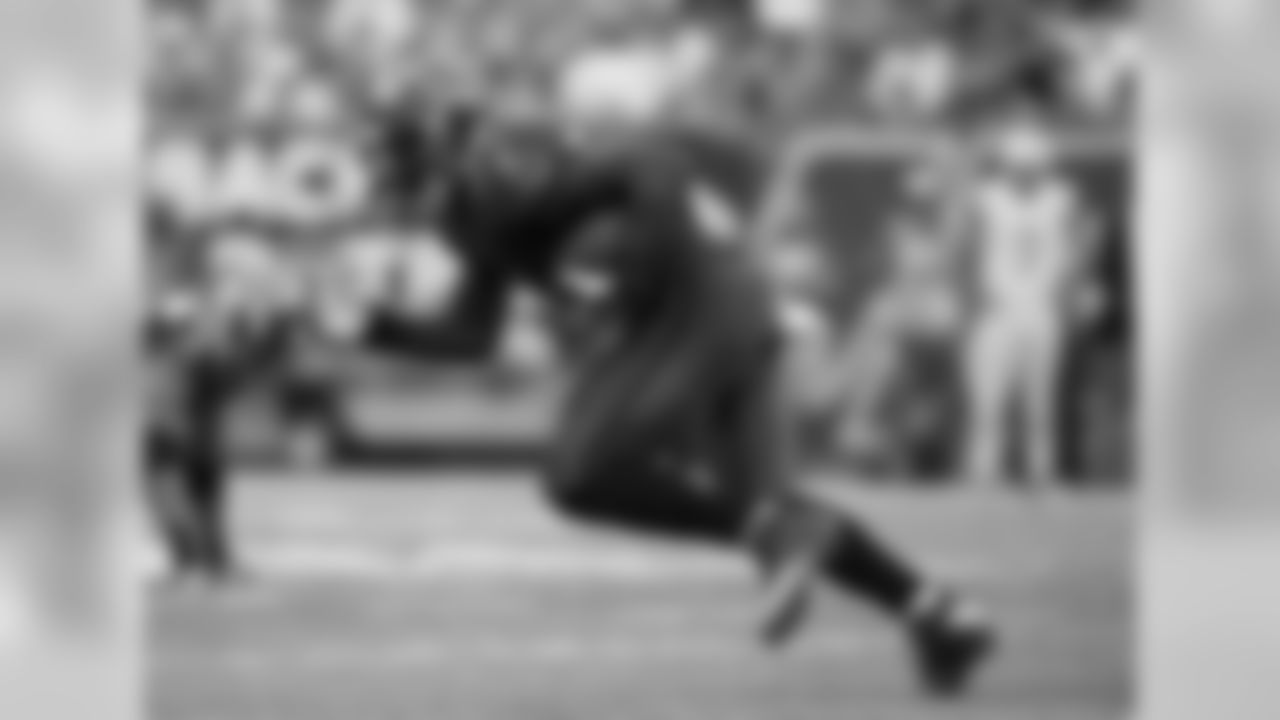
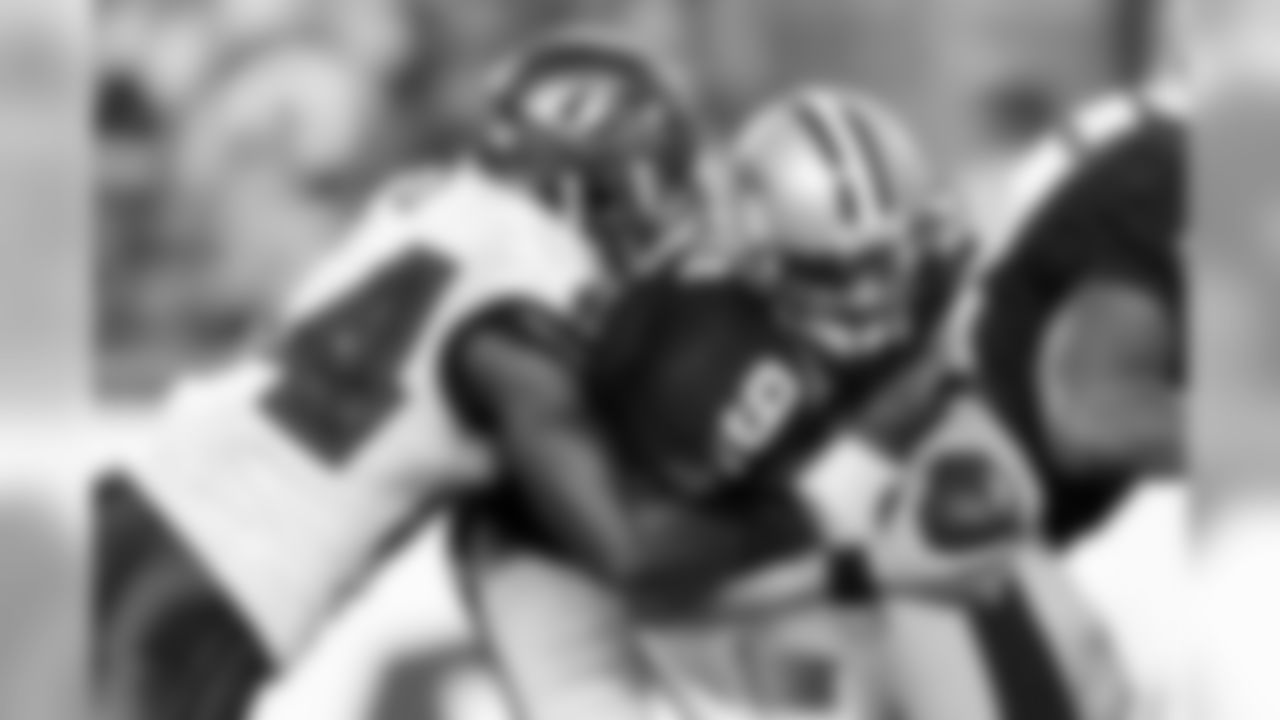
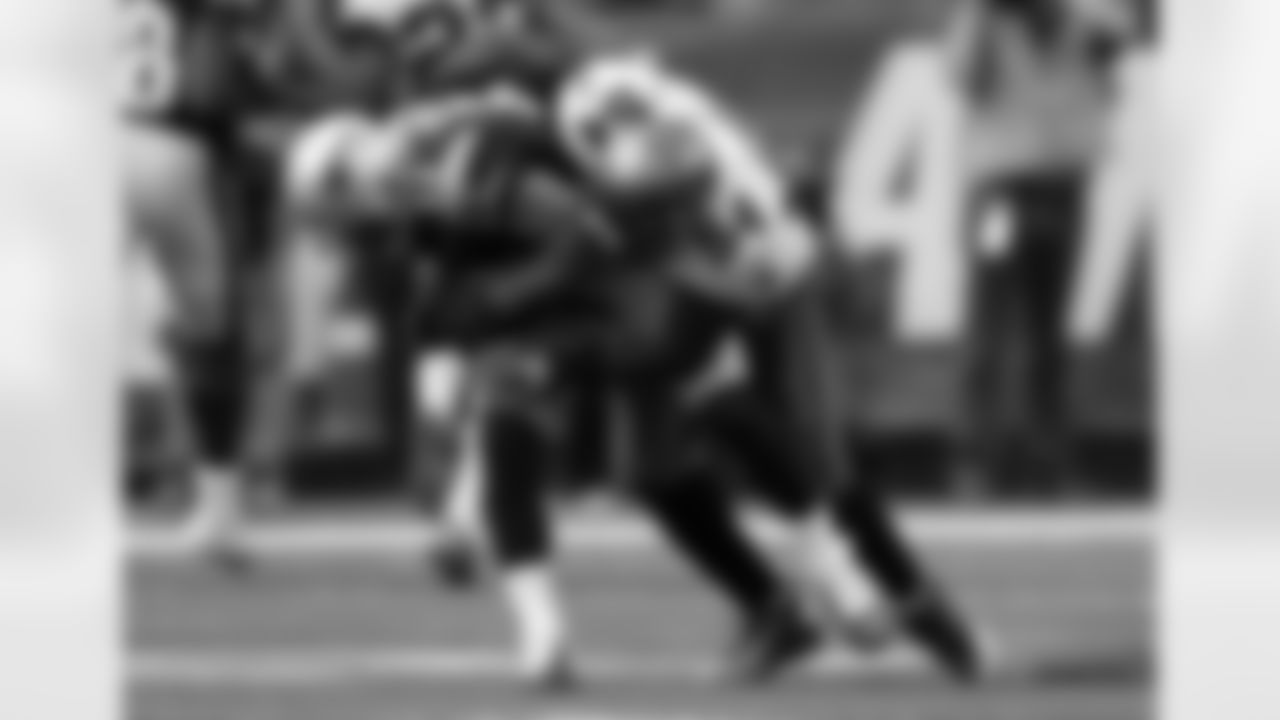
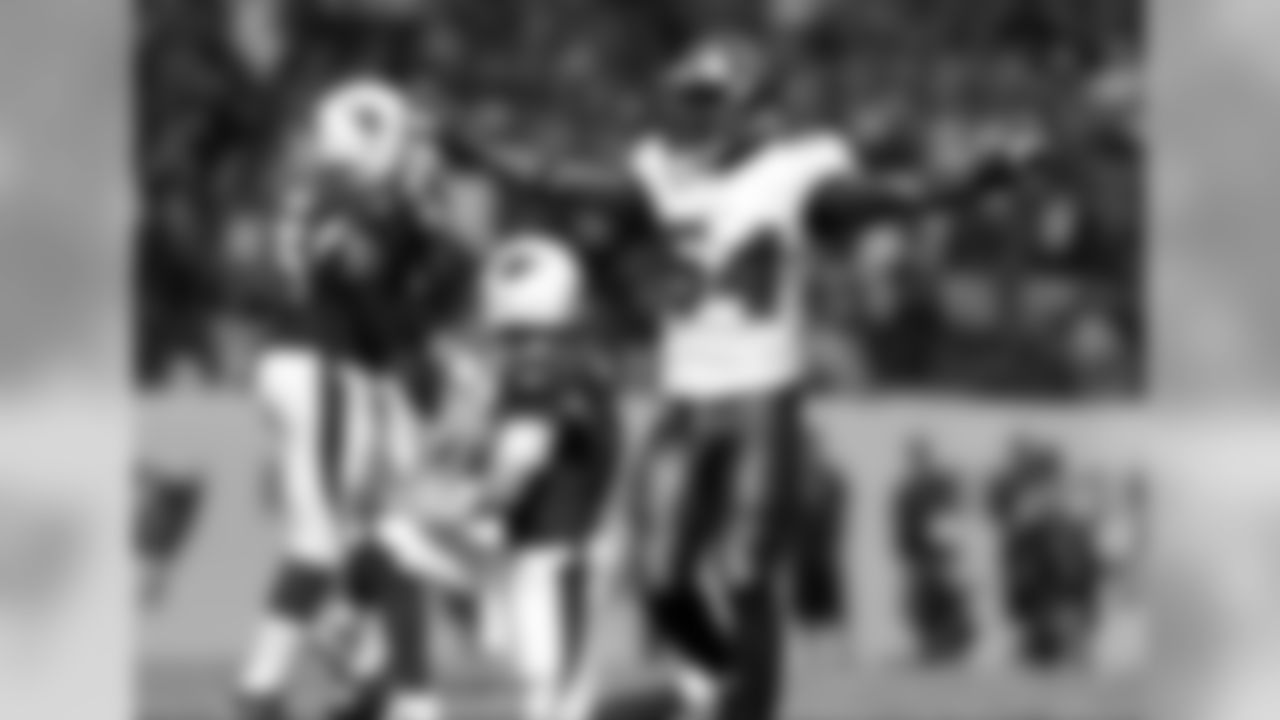
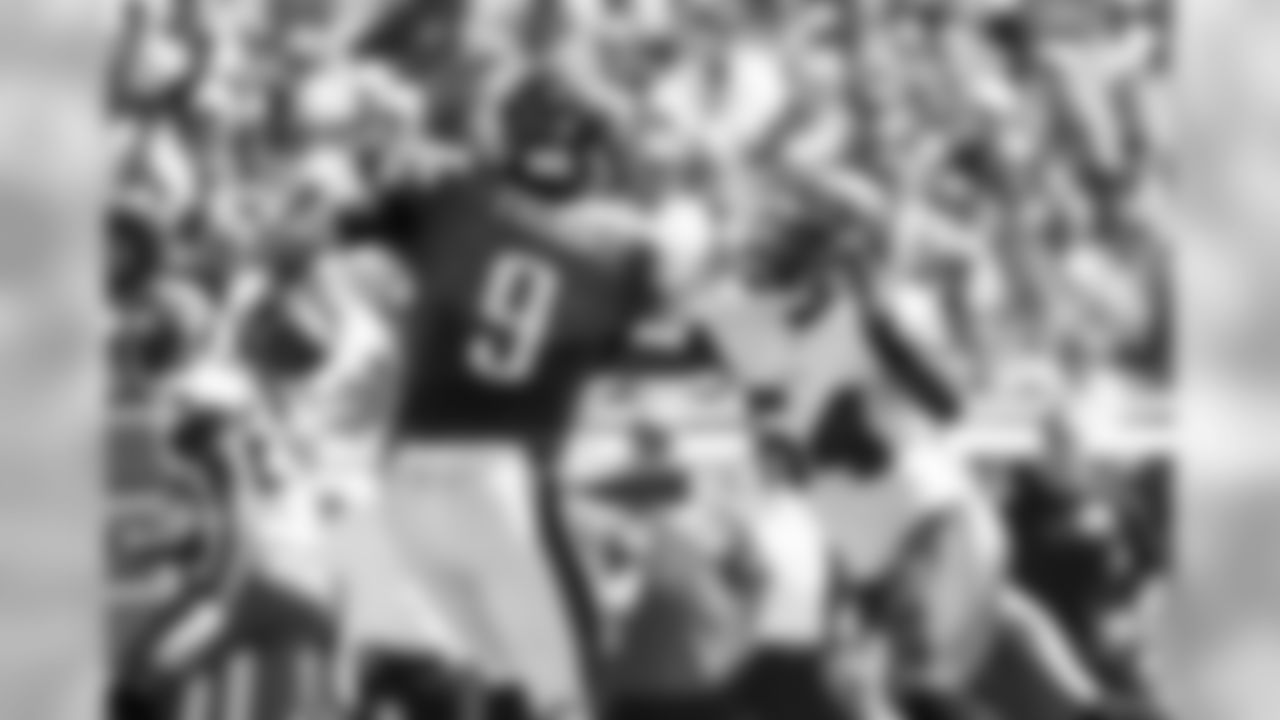
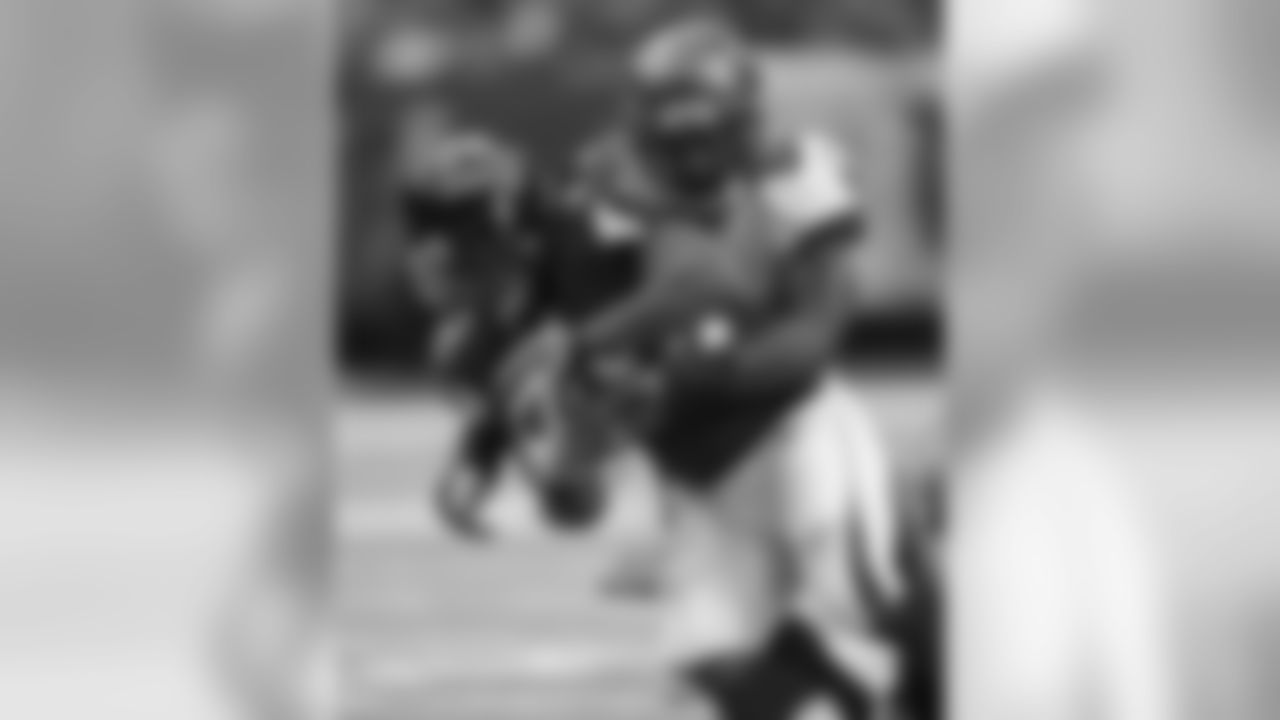
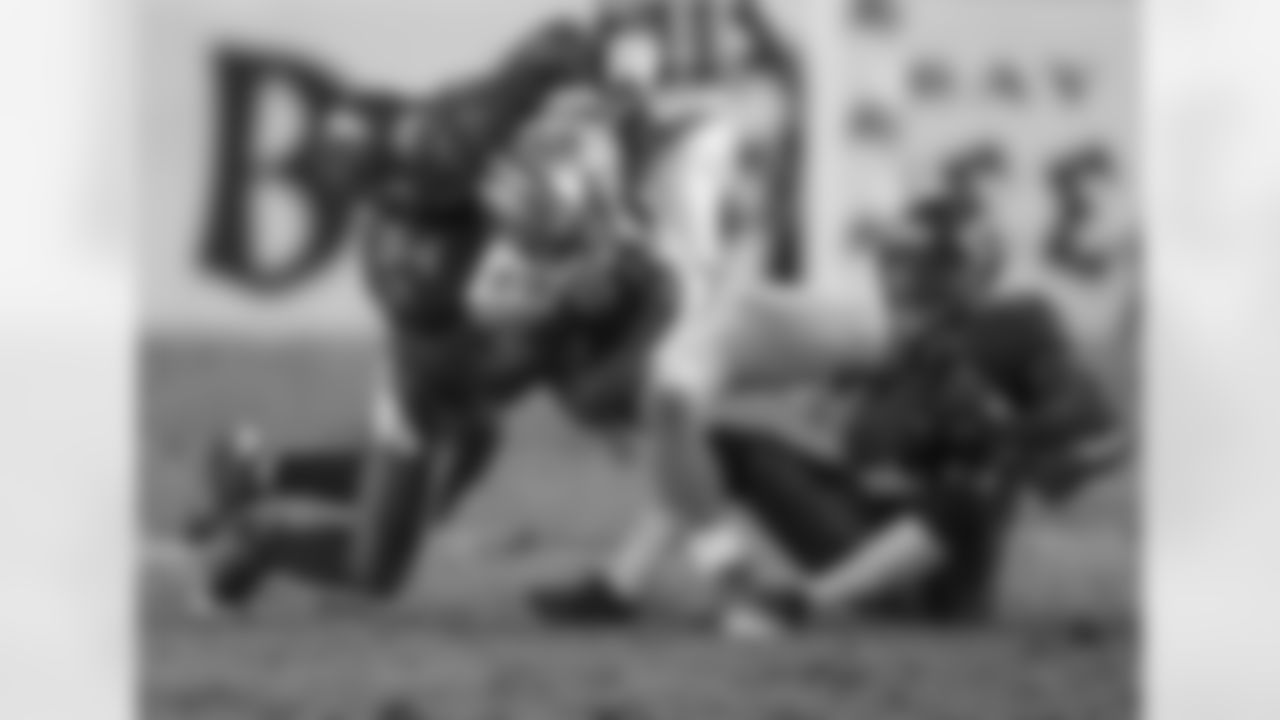
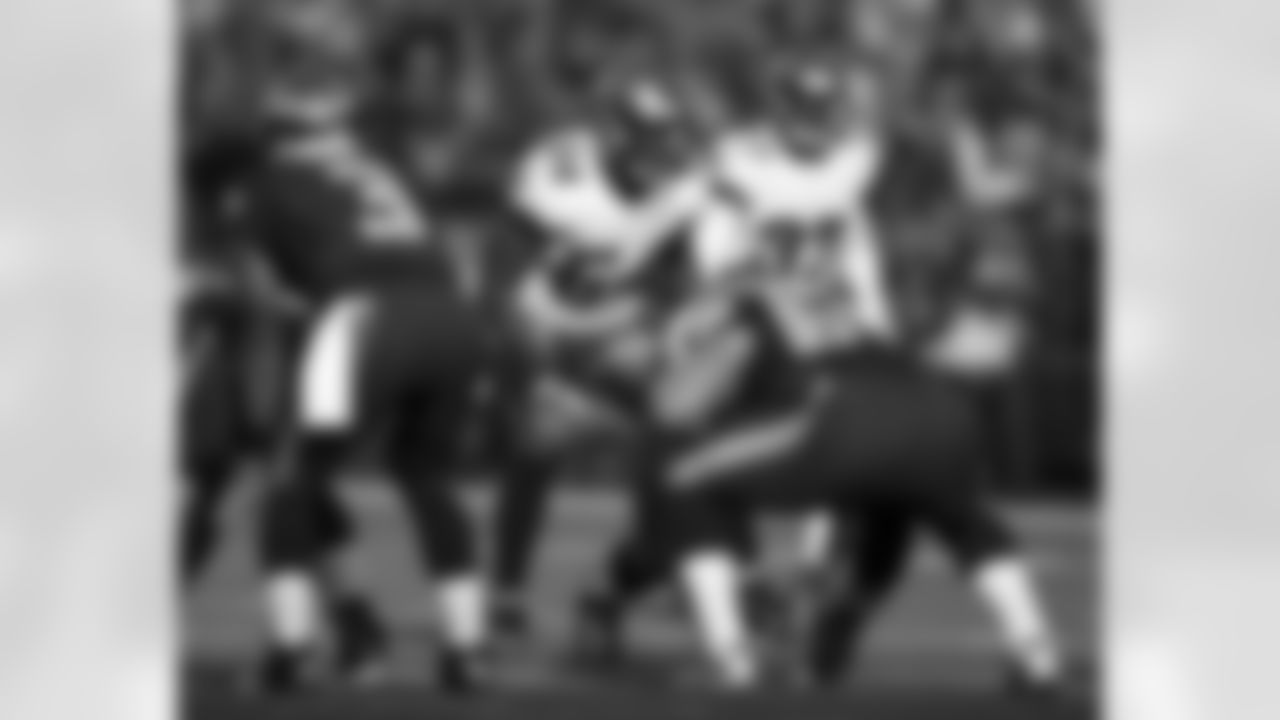
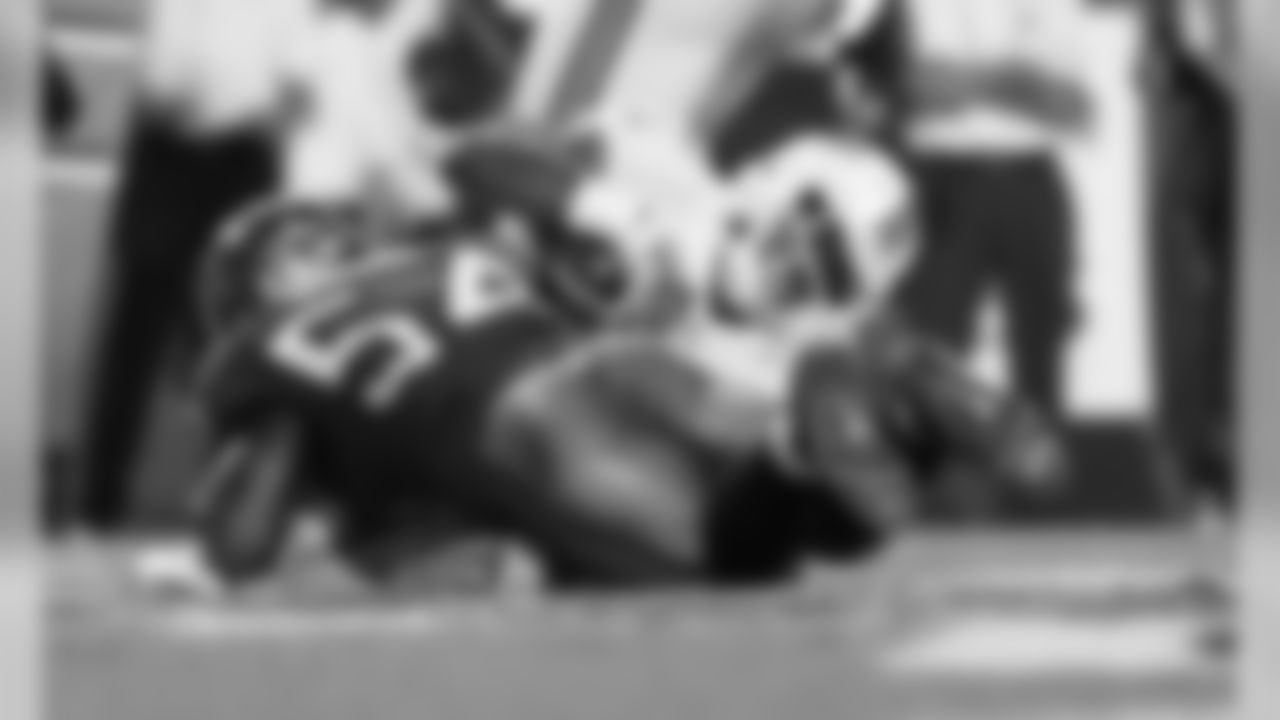
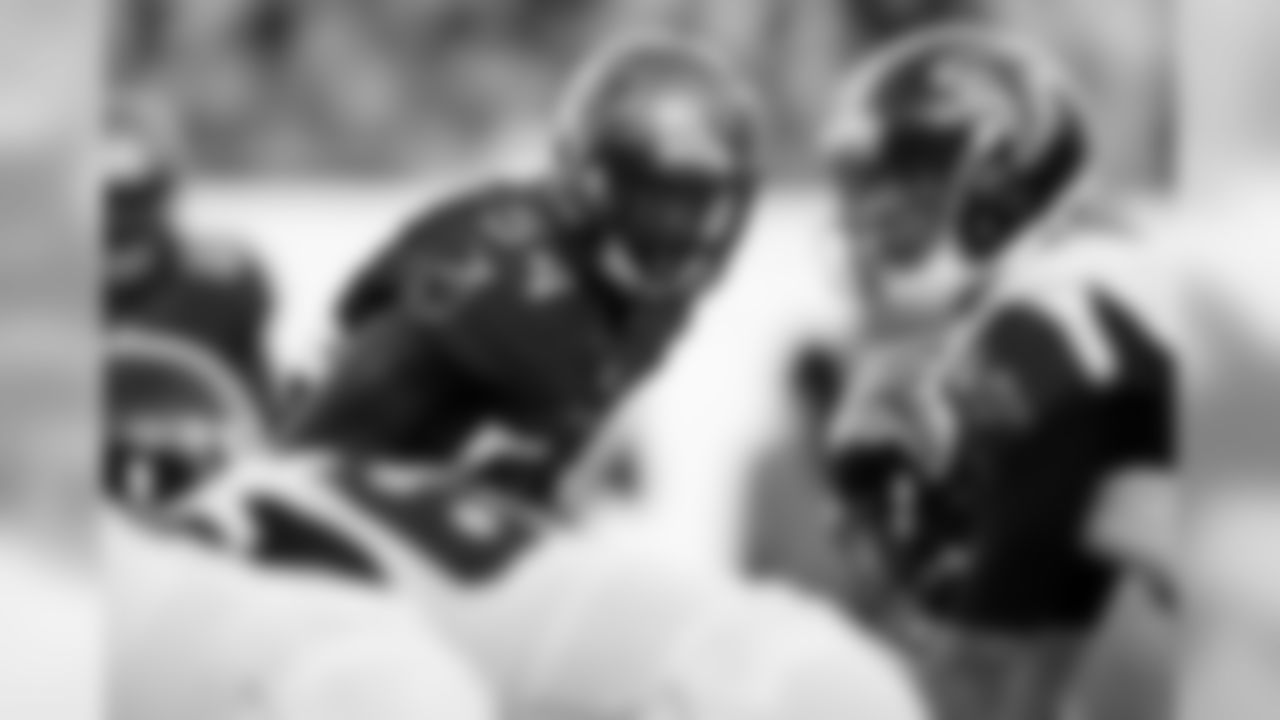
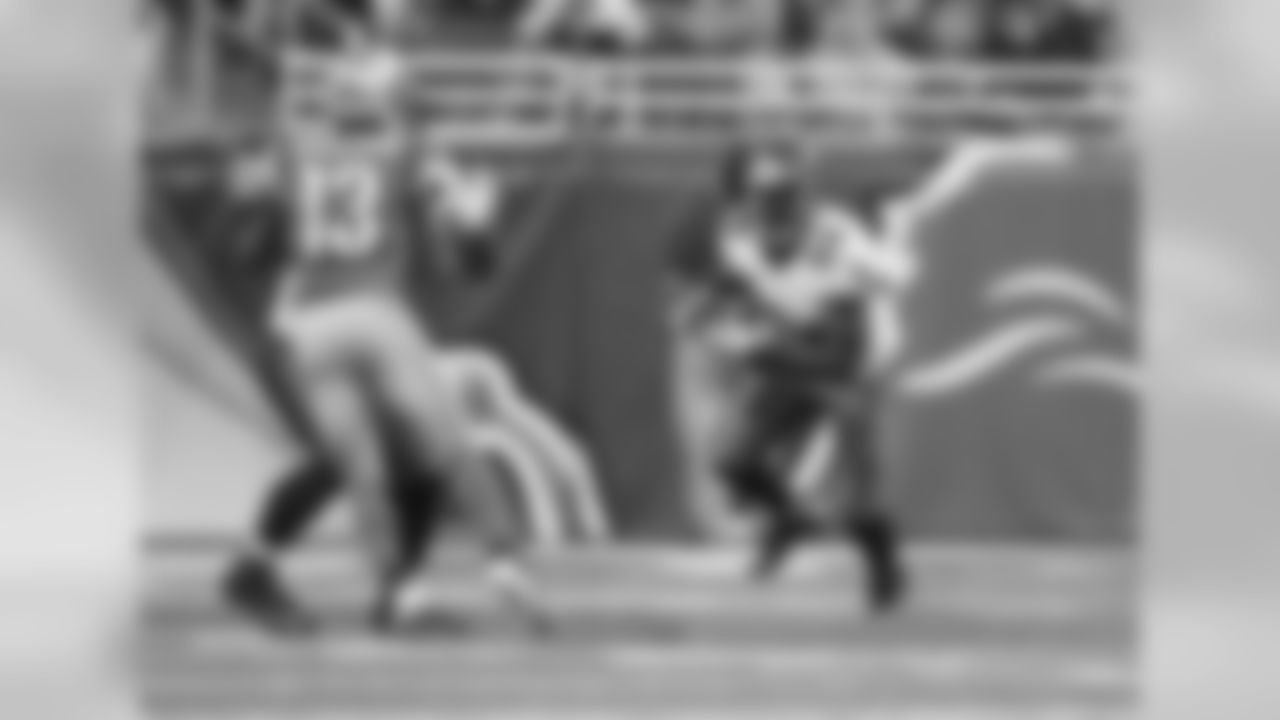
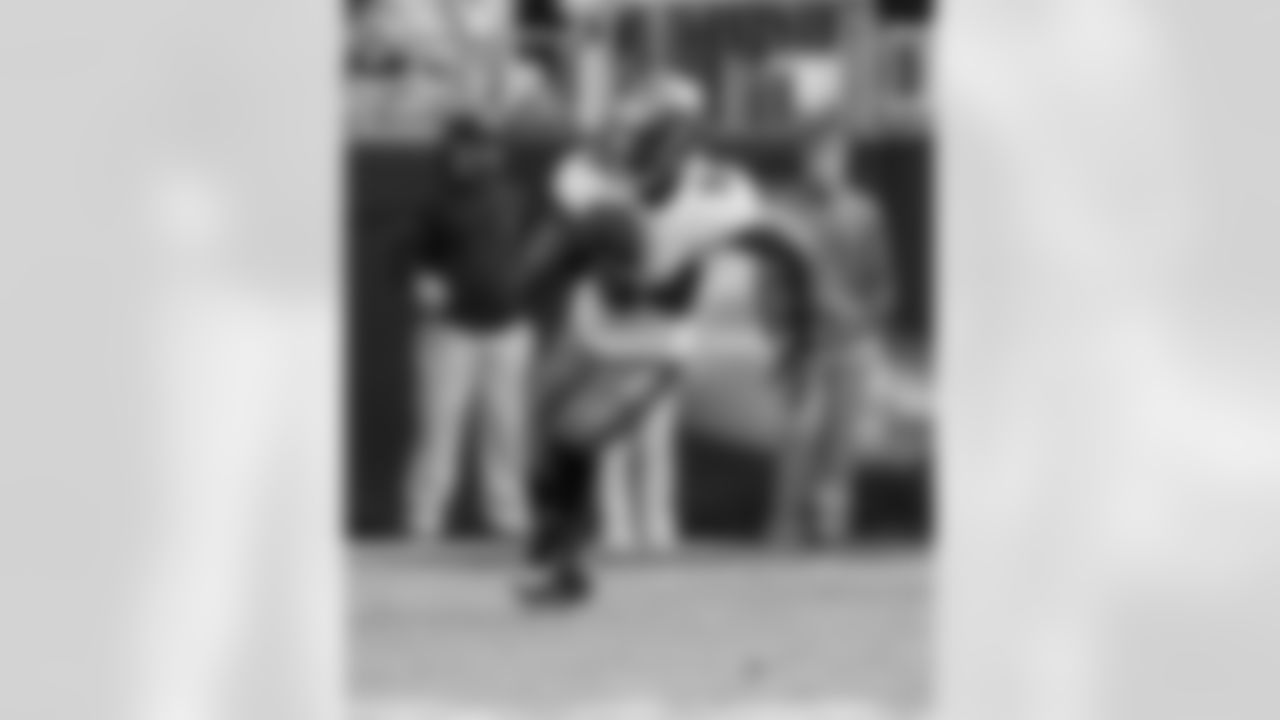
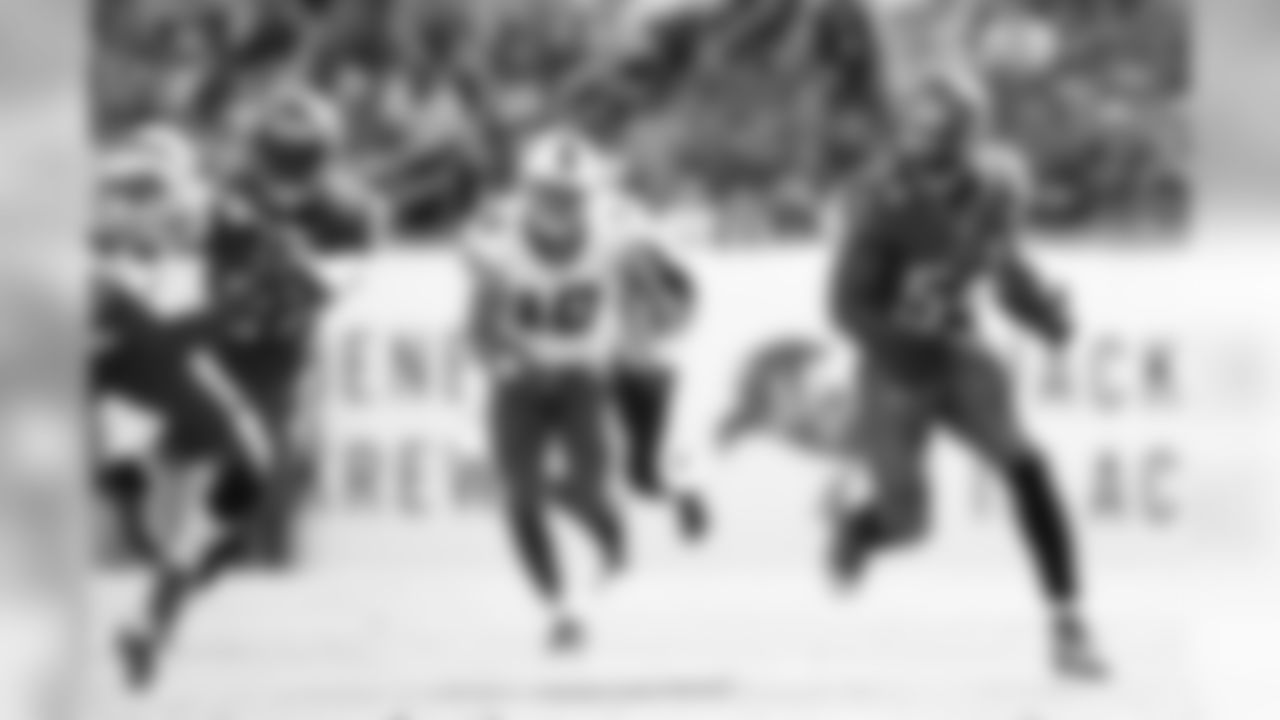
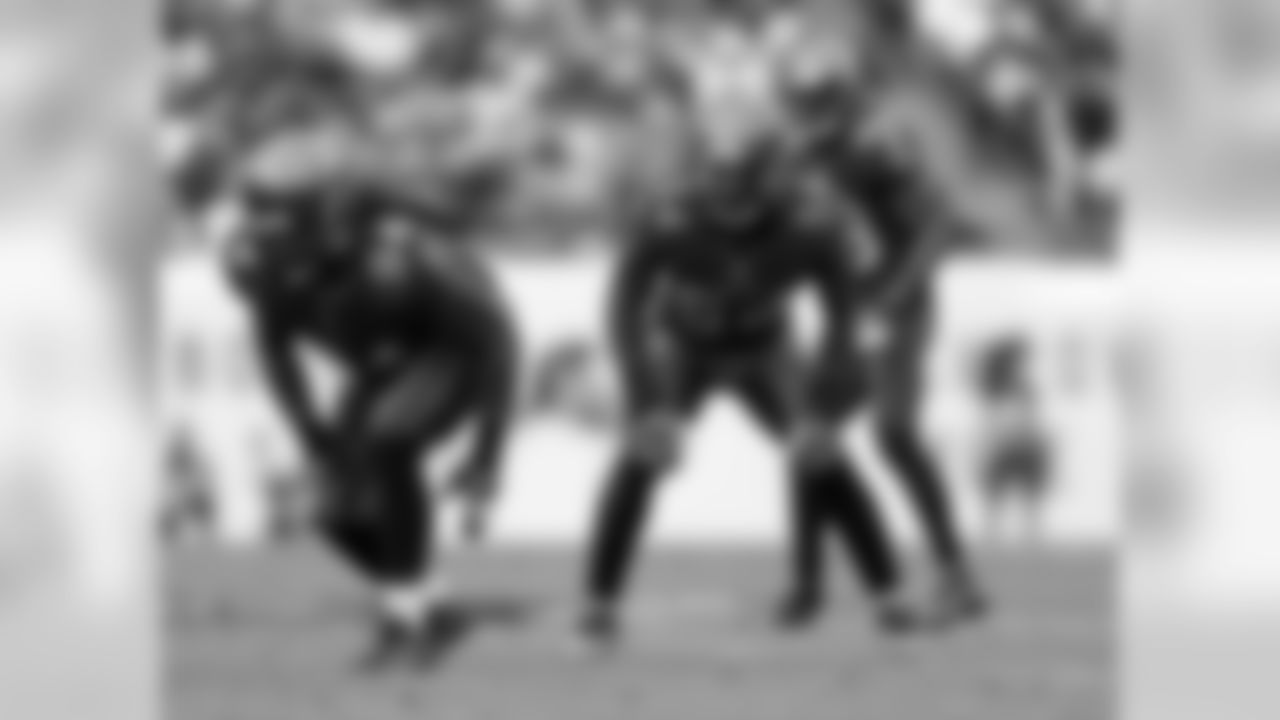
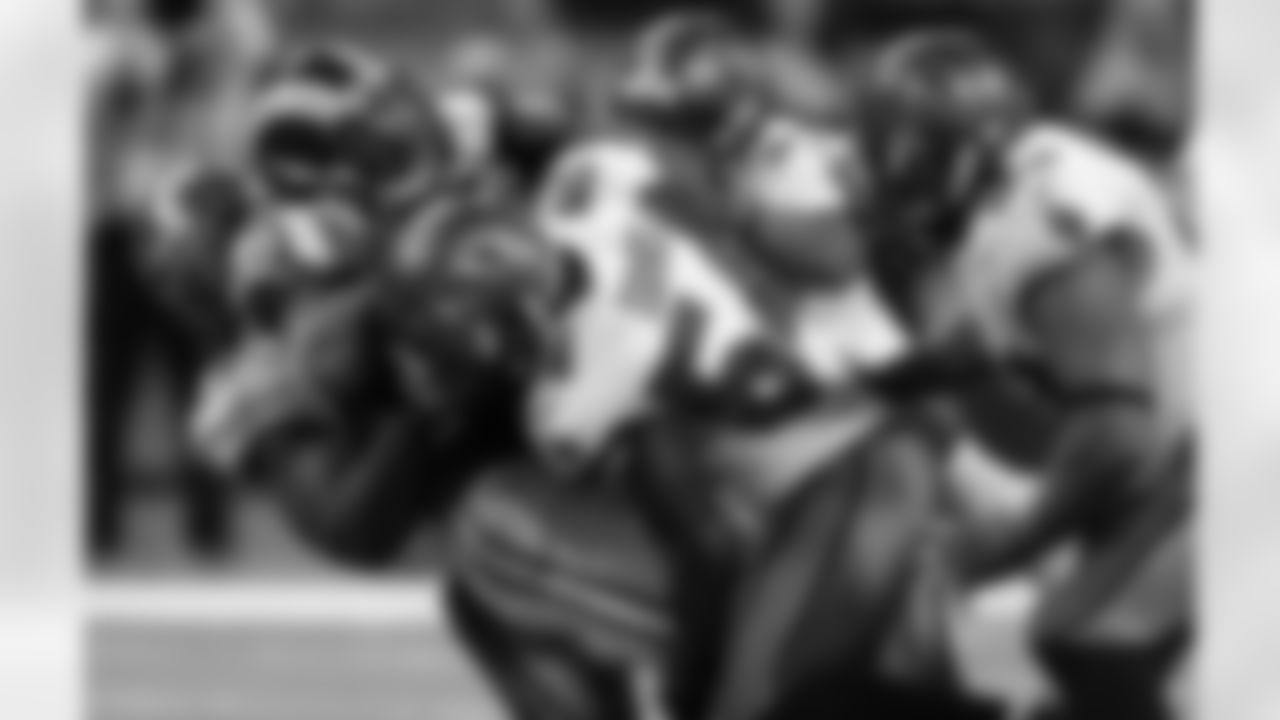
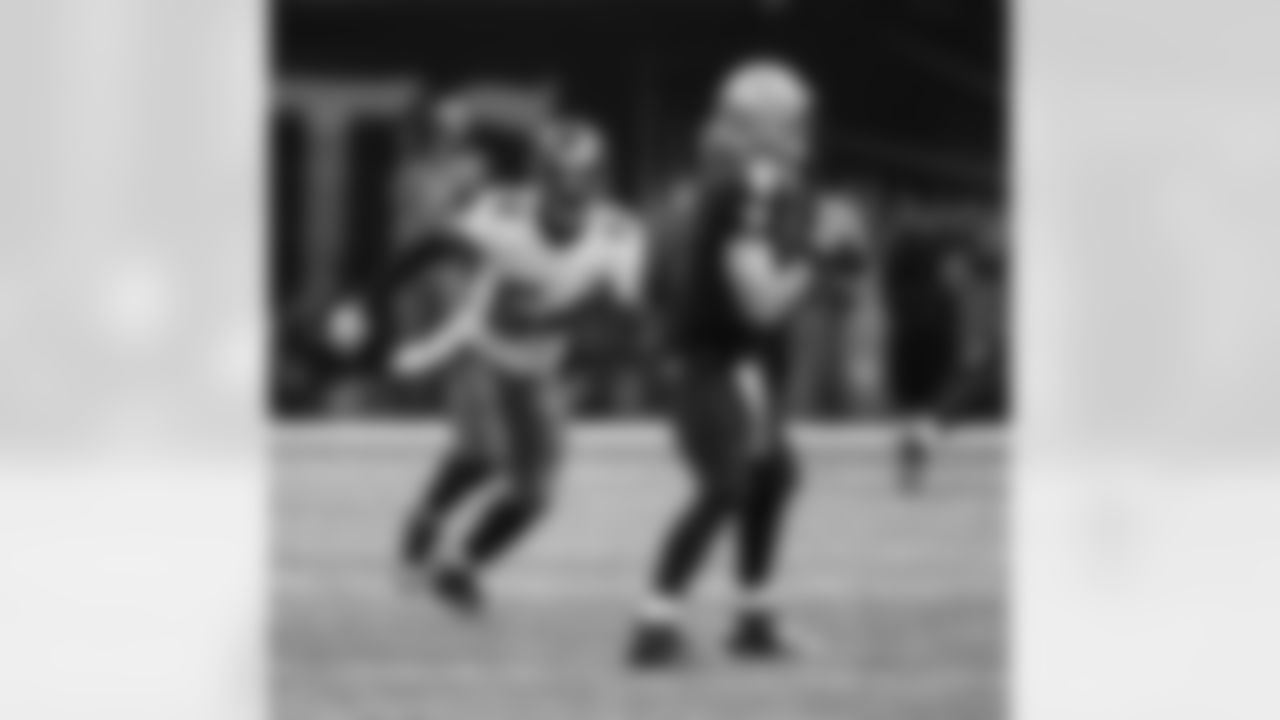
For some perspective, check out this 2013 video from on-scene at the Combine, with Dominik describing the process that led to David ending up in red and pewter. The most interesting part: It wasn't anything that David did on the stadium turf that pushed him up the Bucs' draft board, but the impression he made during an evening interview at the players' hotel.
While NFL teams do pay attention to the 40-yard dash times and vertical leaps that are logged in Indy, they probably get more out of the evenings, when the hundreds of prospects go through a 15-minutes-at-a-time do-si-do for four solid hours. The Buccaneers certainly found their 15 minutes with David to be useful. They had already pegged him as a great tackler and a good coverage linebacker, but their meeting with him in Indy convinced the team that he was a very intelligent player who always knew why he was doing what he was doing on the field.
David didn't hurt his stock during the physical workouts. His 19 reps on the 225-pounc bench press, 36.5-inch vertical leap and 4.57-second 40-yard dash were all good numbers, but it was his brain that truly improved his draft stock – at least for the Buccaneers – in 2012.
4. S Sabby Piscitelli, #64 overall, 2007
Sabby Piscitelli most recently made news last October when he reported to a WWE Performance Center in Orlando to begin training as a professional wrestler. One hopes that career move goes well for the former Buccaneer, but either way it's an indication that the team's second second-round pick in 2007 didn't work out very well.
Piscitelli had a strong senior season at Oregon State, being named a team captain and racking up five interceptions, 12 passes defensed and 44 tackles. That year, LaRon Landry, Reggie Nelson and Eric Weddle headlined a fairly strong class of safeties. The Buccaneers' defense had experienced a rare down year in 2006 and free safety Will Allen seemed ripe for replacement after a low-impact season as a starter. (It should be noted that the same Will Allen played his 11th NFL season in 2014, even starting four games for the Steelers.)
The 6-3 Piscitelli had an impressive physique and good speed. And then he killed it at the Combine. He ran the 40-yard dash in 4.44 seconds, outstanding for a safety. He did well in the vertical leap and broad jump and put up 19 reps on the 225-pound bench press. Again, we'll never know if these numbers affected the consensus among Buccaneer scouts and personnel men, but his status as a second-round pick clearly meant the team expected him to be a solid contributor, at worst.
Instead, Piscitelli struggled as a Buccaneer, taking poor angles to the ball and missing too many tackles. He was finally released late in the 2010 season and he later saw time in Cleveland and Kansas City, though 2011 would prove to be his swan song. Mike Mamula doesn't necessarily deserve his mantle as the prototypical "workout warrior" – he did, after all, rack up 31.5 sacks over five seasons – but that is a title that certainly seems to fit Piscitelli.
























